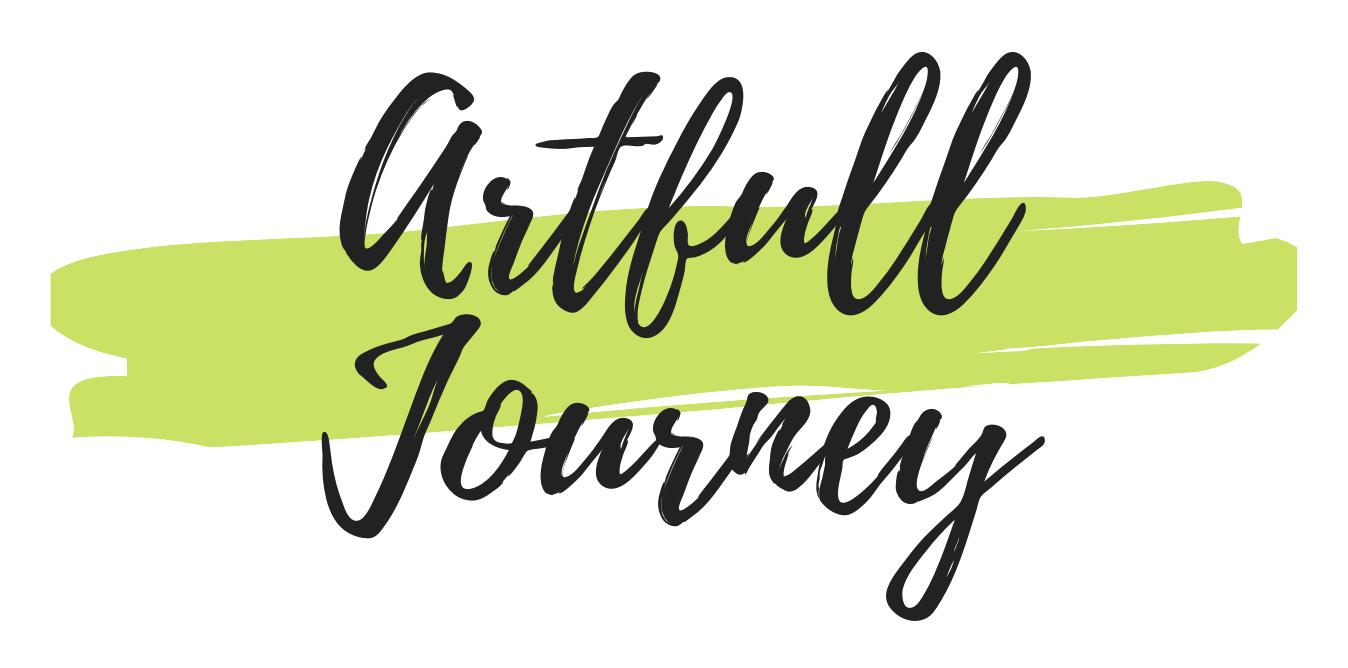In today’s fast-paced world, creativity stands as a cornerstone of innovation and progress, driving advancements across industries from business to science, art, and beyond. Whether you’re crafting groundbreaking marketing campaigns, solving complex problems, or exploring new frontiers in research, the application of effective **creative methods and practices** can unlock unprecedented opportunities. This article delves into the essence of creativity, examining its multifaceted nature and the diverse techniques that fuel it. From understanding **creative practices** to mastering methodologies that inspire breakthroughs, we’ll explore how individuals and organizations can harness creativity to achieve remarkable results.
Key Takeaways
- Unlock Creativity with Proven Methods: Utilize divergent thinking, brainstorming, lateral thinking, mind mapping, and perspective shifting to spark innovation and generate unique solutions.
- Master the 5 A’s of Creativity: Understand and apply the Actor (creator), Action (process), Artifact (output), Audience (target), and Affordance (environment) to enhance your creative expression and problem-solving abilities.
- Enhance Creative Thinking: Adopt strategies such as embracing diverse perspectives, practicing mindfulness, and collaborating to foster creativity and innovation in your endeavors.
- Foster Creativity with Support: Leverage platforms like Artful Journey to access resources, tutorials, and communities that nurture creativity and provide structured learning opportunities for growth and innovation.

Creative Practices to Inspire Your Artistic Journey
Exploring creative practices can unlock new dimensions of your artistic potential. Here are some effective techniques to foster creativity and keep your artistic spirit alive:
- Set Intentions – Begin each session with a clear intention, whether it’s to explore a new medium or delve deeper into a familiar one.
- Explore Diverse Perspectives – Study works from different cultures and historical periods to broaden your creative horizons.
- Embrace Failure as Feedback – View mistakes as opportunities to learn and grow, rather than setbacks.
- Maintain a Dedicated Space – Create a specific area for your creative work that allows you to focus and feel inspired.
- Practice Mindfulness – Before diving into a project, take a few moments to meditate or clear your mind.
- Collaborate with Others – Working with fellow artists can offer fresh perspectives and spark new ideas.
- Document Your Process – Keep a journal or video log to track your progress and see how far you’ve come.
- Experiment Freely – Don’t hesitate to mix media or combine unexpected elements to create unique pieces.
- Seek Inspiration Regularly – Explore galleries, museums, and nature to reignite your creative motivation.
- Learn from Masters – Study iconic works and analyze the techniques used by legendary artists.
- Take Breaks Strategically – Sometimes stepping away can give you a fresh perspective on your project.
- Stay Curious – Approach every challenge with curiosity to discover new possibilities.
- Reflect on Feedback – Consider constructive criticism and use it to refine your approach.
- Plan Thoroughly – Outline goals and timelines to stay focused and motivated.
- Engage in Community – Join forums, groups, or workshops to connect with like-minded creatives.
- Be Open to Change – Embrace evolution in your style and techniques to stay dynamic.
- Celebrate Progress – Acknowledge achievements, no matter how small, to maintain momentum.
By incorporating these practices into your routine, you can unlock new levels of creativity and continue your artistic journey with renewed energy and purpose. Explore more resources on Artful Journey to find inspiration and techniques tailored for your creative process.
What Are Creative Methods?
Creative methods encompass a wide array of techniques and tools used to express ideas, emotions, and concepts in unique ways. These methods allow individuals to explore their imagination and communicate thoughts visually, auditorily, or through written words. Below are some common creative methods and their applications:
Visual Arts
- Drawing: A timeless medium that allows for precise expression and storytelling.
- Painting: Utilizes colors and textures to convey emotions and scenes.
- Sculpture: Creates three-dimensional forms to depict abstract or realistic concepts.
- Photography: Captures moments and stories through still images.
- Digital Art: Uses software tools to manipulate and create visuals.
Performing Arts
- Dance: Communicates narratives and feelings through movement.
- Music: Composes melodies, rhythms, and harmonies to evoke emotions.
- Theater: Brings scripts to life through acting, sets, and costumes.
- Choreography: Designs sequences of movements for performances.
Literary Arts
- Writing: Conveys ideas and stories through prose, poetry, or journals.
- Journaling: Records personal reflections and experiences.
- Editing: Refines written pieces to enhance clarity and impact.
Culinary Arts
- Cooking: Combines ingredients to create flavorful dishes.
- Baking: Crafts bread, pastries, and desserts.
- Food Decoration: Enhances presentation through artistic designs.
Design
- Graphic Design: Creates visual content for branding and marketing.
- Fabric Design: Develops patterns for textiles and clothing.
- Landscape Design: Plans outdoor spaces for aesthetic appeal.
Digital Tools for Creativity
- Video Editing Software: Edits footage to create compelling videos.
- 3D Modeling: Constructs virtual models for gaming or prototyping.
- Collage Making: Assembles images to create unique artworks.
Benefits of Creative Methods
Creative methods foster innovation, emotional expression, and problem-solving skills. They can be applied in various fields, including education, therapy, and business.
Explore more creative resources and tutorials on Artful Journey to unlock your full potential and discover new techniques.

Examples of Creative Practice
- Painting: Creating original artwork using various mediums such as oil, watercolor, or digital tools.
- Sculpture: Crafting three-dimensional pieces from materials like clay, stone, or metal.
- Photography: Capturing moments through still photography or experimental techniques.
- Dance: Developing choreographed routines that tell stories or explore movement patterns.
- Musical Composition: Writing and producing original music or soundtracks.
- Writing: Authoring novels, poems, essays, or scripts.
- Cooking: Experimenting with unique recipes and culinary techniques.
- Design: Creating visual designs for branding, product packaging, or interior spaces.
- Digital Art: Using software to create digital paintings, animations, or concept art.
- Filmmaking: Directing and producing short films, documentaries, or video content.
- Theater: Staging live performances that combine acting, directing, and set design.
- Calligraphy: Mastering the art of beautiful handwriting through practice.
- Gardening: Designing and tending to gardens that reflect personal style or themes.
- Baking: Developing signature recipes that become family heirlooms.
- Woodworking: Crafting furniture or decorative items from wood.
- Quilting: Sewing together fabrics to create patchwork designs or clothing.
- Pottery: Making functional or decorative ceramic objects.
- Street Performance: Performing acts in public spaces to engage passersby.
- Body Painting: Applying temporary or permanent body art during events.
- Event Planning: Organizing celebrations or themed experiences.
- Storytelling: Sharing narratives through spoken word, poetry, or theater.
- Fashion Design: Conceptualizing and creating unique clothing or accessories.
- Interior Design: Redesigning living spaces to enhance functionality and aesthetics.
- Landscaping: Shaping outdoor environments through planting and hardscaping.
- Model Building: Constructing scale models from scratch.
- Astronomy: Observing and documenting celestial phenomena.
- Call center scripting: Crafting effective communication protocols for customer service.
- Brand Identity Design: Creating logos, color schemes, and brand guidelines.
- Market Research: Analyzing consumer behavior to inform business strategies.
- Content Creation: Producing videos, blogs, podcasts, or social media content.
- Public Speaking: Delivering speeches or presentations with confidence and clarity.
- Life Coaching: Helping individuals achieve personal or professional goals.
- Personal Styling: Assisting clients in developing their unique fashion look.
- Freelancing: Offering services in writing, design, or technical skills on a project basis.
- Event Management: Coordinating logistics for conferences, weddings, or festivals.
- Translation Services: Converting texts between languages accurately and fluently.
- Online Tutoring: Providing educational support through virtual platforms.
- Virtual Event Hosting: Organizing online gatherings, webinars, or workshops.
- Elder Care Advocacy: Supporting aging adults through companionship or care services.
- Community Organizing: Mobilizing efforts to achieve shared community goals.
- Nonprofit Fundraising: Developing strategies to support charitable causes.
- Urban Farming: Growing food in urban environments for sustainability.
- DIY Projects: Completing home renovations or crafting items for personal use.
- Genealogy Research: Tracing family histories through records and interviews.
- Historical Reenactment: Bringing history to life through accurate portrayals.
- Wilderness Survival Training: Learning to navigate and survive in natural settings.
- Composting: Converting organic waste into nutrient-rich soil amendments.
- Permaculture Gardening: Designing sustainable, self-reliant ecosystems in gardens.
- Traditional Crafts: Preserving techniques like basket weaving or rug making.
- Hand Lettering: Creating decorative text using hand tools or calligraphy.
- Map and Chart Design: Illustrating geographical information for navigation or decoration.
- Scientific Research: Conducting studies to advance knowledge in various fields.
- Medical Simulation Training: Mimicking real-life medical scenarios for training purposes.
- Forestry Practices: Managing tree populations for environmental health and resource extraction.
- Aviation Maintenance: Performing routine checks and repairs on aircraft.
- Construction Planning: Overseeing the design and execution of building projects.
- Software Development: Programming applications to solve specific problems or meet user needs.
- Financial Planning: Creating strategies to manage wealth and achieve financial goals.
- Legal Document Drafting: Preparing contracts, wills, or legal agreements.
- Event Videography: Capturing special moments through high-quality video production.
- Wedding Planning: Organizing every detail of a couple’s wedding day.
- Interior Plant Design: Selecting and arranging plants to enhance indoor spaces.
- Food Preservation Techniques: Learning methods like canning or freezing foods.
- Animal Behavior Training: Teaching pets or working animals specific commands or tricks.
- Historical Preservation: Restoring buildings or artifacts to their original condition.
- Environmental Assessment: Evaluating the impact of projects on local ecosystems.
- Product Testing: Assessing the quality and performance of new products.
- Brand Storytelling: Crafting narratives that align with a company’s mission and values.
- Customer Experience Design: Improving interactions through thoughtful service strategies.
- Community Fitness Programming: Organizing classes or challenges to promote health.
- Real Estate Negotiations: Facilitating deals between buyers and sellers.
- Freight Logistics: Coordinating the transportation of goods efficiently.
- Medical Coding: Assigning codes to medical procedures for billing and insurance purposes.
- Pharmaceutical Research: Discovering new drugs or improving existing treatments.
- Education Consulting: Advising schools on curriculum development and policy.
- Marketing Analytics: Analyzing data to optimize advertising campaigns.
- UI/UX Design: Creating intuitive user interfaces for digital products.
- Project Management: Overseeing complex projects to ensure timely completion.
- Event Animation: Adding visual effects to enhance event experiences.
- Brand Strategy: Positioning a company uniquely in the market.
- Customer Success Management: Ensuring customers achieve their goals with our solutions.
- Content Strategy: Planning and executing content marketing campaigns.
- Performance Coaching: Helping individuals reach their peak performance levels.
- Competitive Analysis: Evaluating market leaders to identify opportunities.
- Product Launch Strategy: Planning and executing successful product launches.
- Community Building: Fostering connections among members of a group or organization.
- Policy Analysis: Examining laws and regulations to propose improvements.
- Technology Integration: Implementing systems that enhance organizational efficiency.
- Market Research Analysis: Gathering and interpreting market data.
- Brand Ambassadors: Representing a brand positively in public settings.
- Event Branding: Creating cohesive branding for events or campaigns.
- Customer Journey Mapping: Understanding the customer experience at each touchpoint.
- Service Design: Redefining service delivery to exceed expectations.
- Community Engagement: Encouraging participation in local initiatives or events.
- Strategic Partnerships: Forming alliances that benefit both parties.
- Scenario Planning: Anticipating potential future challenges and opportunities.
- Change Management: Leading organizations through transitions smoothly.
- Conflict Resolution: Mediating disputes to achieve peaceful outcomes.
- Leadership Development: Training future leaders within an organization.
- Team Building Exercises: Activities to strengthen group dynamics.
- Feedback Systems: Implementing processes for continuous improvement.
- Quality Control: Ensuring products or services meet high standards.
- Risk Management: Identifying and mitigating potential threats.
- Process Optimization: streamlining workflows to increase efficiency.
- Sustainability Initiatives: Implementing eco-friendly practices within organizations.
- Employee Retention Strategies: Creating programs to keep talent engaged.
- Client Acquisition Strategies: Building a pipeline of qualified leads.
- Revenue Growth Planning: Expanding income streams and increasing profitability.
- Brand Extension: Extending brand presence through new products or services.
- Customer Delight: Going beyond expectations to ensure satisfaction.
- Market Expansion: Identifying new markets for existing products.
- Product Innovation: Developing new offerings that meet market demands.
- Operational Efficiency: Streamlining processes to reduce costs and improve productivity.
- Brand Loyalty Programs: Encouraging repeat purchases through rewards.
- Community Fundraisers: Organizing events to support local causes.
- Global Marketing: Adapting strategies to suit international markets.
- Customer Feedback Analysis: Gathering insights to improve products and services.
- Competitor Analysis: Evaluating strengths and weaknesses of rivals.
- Brand Positioning: Differentiating a brand from competitors.
- Customer Onboarding: Welcoming new customers effectively.
- Customer Support Strategy: Ensuring efficient and helpful assistance.
- Product Roadmap: Planning future features based on feedback and trends.
- Channel Strategy: Choosing the right distribution channels for products.
- Customer Education: Informing users about product features and benefits.
- Brand Guidelines: Establishing visual and stylistic standards.
- Customer Success Stories: Highlighting positive outcomes from using the product.
- Brand Ambassadors Program: Engaging advocates to promote the brand.
- Customer Lifetime Value Analysis: Assessing long-term customer relationships.
- Brand Messaging: Creating consistent and compelling messages.
- Customer Segmentation: Dividing customers based on behavior or preferences.
- Brand Identity: Defining the essence of a brand through visuals and tone.
- Customer Retention: Keeping customers engaged and satisfied.
- Brand Book: A comprehensive guide detailing brand values and guidelines.
- Customer Journey: The sequence of interactions a customer has with a brand.
- Brand Culture: The shared values and behaviors within an organization.
- Customer Experience: The overall experience a customer has with a brand.
- Brand Strategy: Aligning brand actions with long-term goals and values.
- Customer Feedback Loop: Continuously improving based on client input.
- Brand Consistency: Maintaining uniformity across all brand touchpoints.
- Customer Communication: Effectively conveying brand messaging.
- Brand Recognition: Building awareness and memorability of the brand.
- Customer Empowerment: Arming customers with tools to succeed.
- Brand Relationships: Nurturing emotional connections with the brand.
- Customer Education: Informing and enabling customers to maximize product value.
- Brand Legacy: Ensuring the brand endures beyond its founding generation.
- Customer Insights: Gleaning valuable data from customer interactions.
- Brand Architecture: Organizing brands and their sub-brands effectively.
- Customer Journey Mapping: Visualizing the path customers take with a brand.
- Brand Equity: The strength and value associated with a brand name.
- Customer Personas: Segmenting customers based on their characteristics and behavior.
- Brand Voice: The tone and style used when communicating with customers.
- Customer Activation: Turning prospective customers into loyal advocates.
- Brand Vision: The long-term goals and aspirations of the brand.
- Customer Acquisition: Attracting new customers through targeted strategies.
- Brand Mission: The purpose and objectives guiding the brand’s actions.
- Customer Retention: Keeping existing customers satisfied and engaged.
- Brand Values: The core beliefs and principles of the brand.
- Customer Conversion: Turning interested individuals into paying customers.
- Brand Positioning: How a brand is perceived in the marketplace.
- Customer Delight: Exceeding customer expectations to drive loyalty.
- Brand Storytelling: Communicating the brand’s narrative effectively.
- Customer Feedback: Collecting and acting on customer opinions.
- Brand Extension: Expanding the brand’s offerings through new products or services.
- Customer Experience Design: Shaping interactions to be memorable and meaningful.
- Brand Identity: The unique elements that define a brand.
- Customer Journey: The series of interactions a customer has with a brand.
- Brand Strategy: Aligning brand actions with long-term goals and values.
- Customer Loyalty: Building lasting relationships with customers.
- Brand Consistency: Uniformity across all brand touchpoints.
- Customer Communication: Effectively conveying brand messaging.
- Brand Recognition: Building awareness and memorability of the brand.
- Customer Empowerment: Arming customers with tools to succeed.
- Brand Relationships: Nurturing emotional connections with the brand.
- Customer Education: Informing and enabling customers to maximize product value.
- Brand Legacy: Ensuring the brand endures beyond its founding generation.
- Customer Insights: Gleaning valuable data from customer interactions.
<

What Were the Five Methods Through Which Creative Thinking Can Bring About Improvement?
- Divergent Thinking: Encouraging creative thinking by exploring a wide range of ideas and perspectives, leading to innovative solutions.
- Brainstorming: Generating numerous ideas in a short period without evaluating them initially, fostering creativity and divergence.
- Lateral Thinking: Approaching problems from a sideways perspective, combining unrelated concepts to create unique solutions.
- Mind Mapping: Visualizing ideas and connections to explore relationships between concepts, aiding in creative problem-solving.
- Perspective Shifting: Altering one’s viewpoint or approach to see things differently, often revealing new opportunities for improvement.
For more resources and tools to enhance your creative process, visit us at Artful Journey .
What Are the 5 A’s of Creativity?
The 5 A’s of creativity are a framework used to explore and understand the dimensions of creative expression. These A’s stand for:
- Actor : The individual or entity involved in the creation process. This could be an artist, designer, or any person engaged in a creative endeavor.
- Action : The specific actions or steps taken to bring a creative idea to life. This includes the process, methods, and techniques employed.
- Artifact : The tangible or intangible result of creativity. This could be a physical object, a piece of work, or even an idea.
- Audience : The target group or individuals who will experience or interact with the creative output.
- Affordance : The opportunities or possibilities presented by the environment or tools available to the creator. This refers to how the context enables or influences creativity.
These concepts collectively help in analyzing and enhancing creative processes, ensuring that all aspects of creativity are considered and optimized. Link to Artful Journey
How These Concepts Apply to Artful Journey
Artful Journey embodies these principles by providing a platform for creators to explore and express their ideas. The site offers resources, tutorials, and inspiration across various art forms, helping artists at every level to grow and innovate. By focusing on the 5 A’s, Artful Journey ensures that creativity is not only fostered but also supported through well-structured learning opportunities and community engagement.
Competitors and Market Position
While Artful Journey stands out in its approach, there are other platforms that offer similar services. Competitors like [Your Competitor Name] and [Another Competitor Name] also provide creative resources and communities. However, Artful Journey distinguishes itself through its emphasis on the 5 A’s framework, making it a unique and valuable resource for creators seeking a holistic understanding of creativity. Link to Competitor 1 Link to Competitor 2

Three Strategies for Creative Thinking
Creative thinking is a skill that can be cultivated through deliberate practice and understanding of underlying principles. Here are three evidence-based strategies to enhance your creative process:
- Embrace Diversity of Thought
- Practice Mindfulness and Reflection
- Collaborate and Borrow Ideas
Diversify your experiences and exposures to stimulate creativity. Engage with various perspectives, cultures, and disciplines to broaden your cognitive horizons. This exposure fosters innovation by allowing you to connect seemingly unrelated concepts.
Mindfulness helps clear mental clutter and increase focus. By regularly reflecting on your thoughts and experiences, you can identify patterns and generate unique ideas. Techniques like journaling or meditation can enhance this process.
Collaboration sparks new ideas through shared perspectives. Work with diverse teams or groups to gain fresh viewpoints. Additionally, studying successful creatives and their work can inspire innovative approaches tailored to your goals.
By integrating these strategies, you can unlock your creative potential and develop novel solutions to complex challenges. Remember, creativity thrives in environments that encourage curiosity and experimentation.




0 Comments